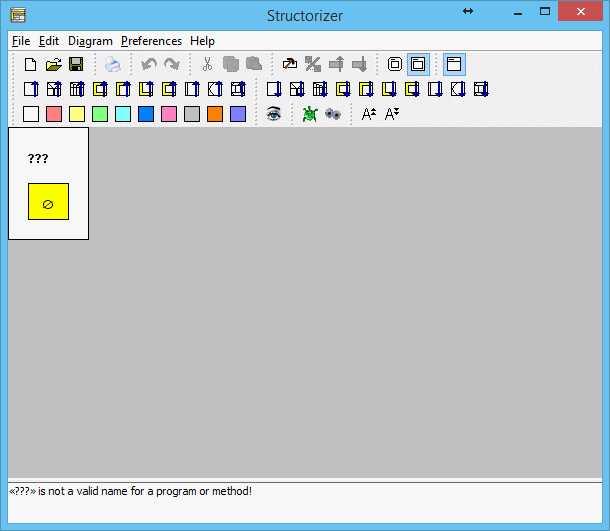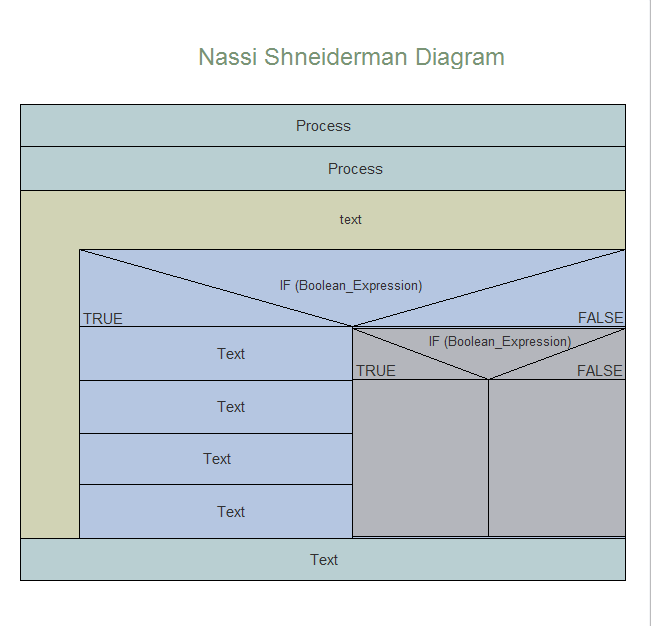


The way to activate this mode differed between version 3.30-10 and recent versions, however:
Structorizer use online code#
Note: With version 3.30-10 a mode with all interactive code import opportunities being disabled (they don't even appear in the menu) was introduced. (This opportunity will always occur if you use the "Save All" menu item or button with several files never having been saved.)
Structorizer use online serial#
If you would overwrite an existing file you will yet be warned and may freely decide to modify the name, to overwrite the old file, to skip this file, or to cancel the serial saving activity. When you select the target directory and accept the proposed name or specify a different name for the first of the files, you may opt for automatic acceptance of the name proposals for all remaining files via an "accessory" checkbox on the right-hand side of the file chooser dialog: If the limit is exceeded, you will be offered to save the diagrams instead and only the assumed main or most important diagram will be displayed: These diagrams will be poured into the Arranger unless their number exceeds a configurable limit (see Import Preferences):
Structorizer use online plus#
The import of a single file may produce many diagrams (one for each function or routine plus some diagrams for shared stuff). If an error occurred then you will get a similar picture but with the information that errors occurred (after accepting you would be shown the error description in a separate window, see further below): The monitor allows you to abort the import process via the "Cancel" button: This way it may look like on the completion of an import: Certain control keywords (or standard function names) of the source language recognized in the instruction texts may be replaced by the corresponding parser preferences for the same structures, as currently configured.Ī code import monitor shows you what phase the import process is working in and the rough progress: The importer will parse the file according to a provided grammar and, if that has succeeded, synthesize control structures from the derived parse tree. If the name extension of the selected file does not match the file filter of any of the available parsers then a choice dialog will open requesting to associate the intended parser (via the related file filter) or to cancel: In the file chooser dialog that will open you may select the appropriate file filter (combobox at the bottom of the dialog), both to restrict the search and to disambiguate the parser choice: If the decision is ambiguous then you will be presented a choice menu to select the most appropriate parser.Īnother way to achieve the same goal is to use the menu, i.e. The respective parser will automatically be selected based on the file name extention. In interactive mode, you can import code files of any supported programming language just by dragging the corresponding sources onto Structorizer. cut some parts out, modify others) in order to be able to import at least the essential algorithmic structure. You may have to experiment with some language-specific Import Preferences or manually pre-process such code files (e.g. Code with pointers will pass the syntax analysis but the resulting diagrams won't be executable because Executor doesn't support pointer types. This means code that makes use of GO TO instructions or other means of the source language not being compatible with the idea and concepts of structured programming. In particular, Structorizer cannot sensibly import so called "spaghetti code". By now, this import feature is only available for CLI Pascal, C (ANSI-C99), Java (SE 8), COBOL, and Processing files, other programming languages are likely to follow.īe aware that the grammars used by Structorizer for parsing the source code are usually somewhat simplified, and you might face parser errors with some correct code samples, which are simply too complex for a reverse engineering or contain peculiarities Structorizer may not cope with anyway. Structorizer allows to derive a structogram from a given source code file (reverse engineering).


 0 kommentar(er)
0 kommentar(er)
